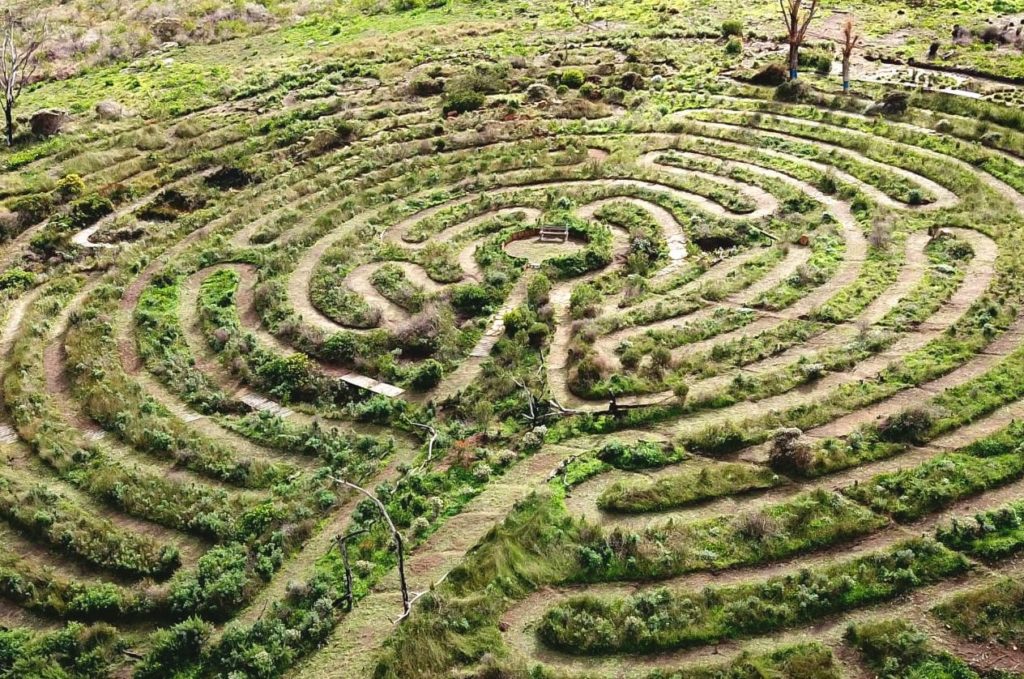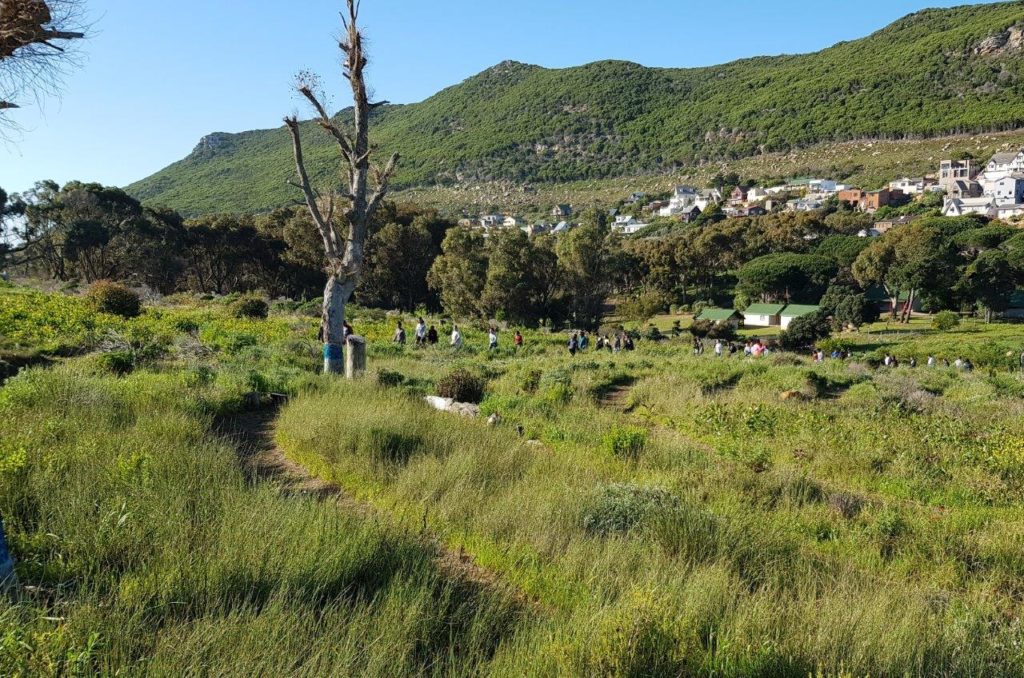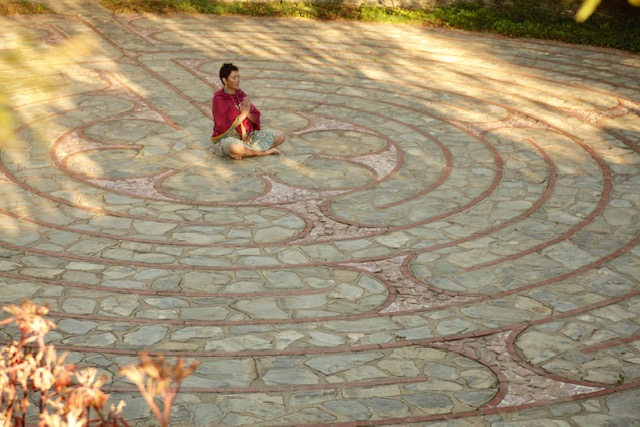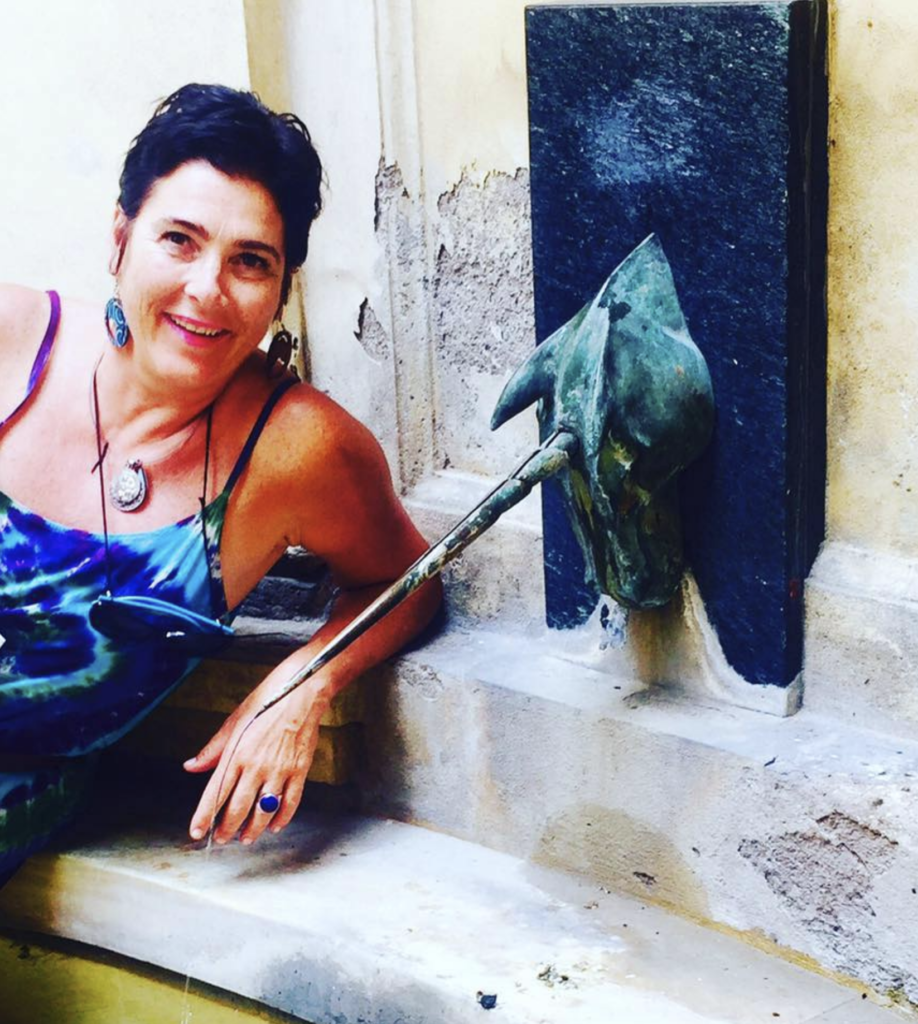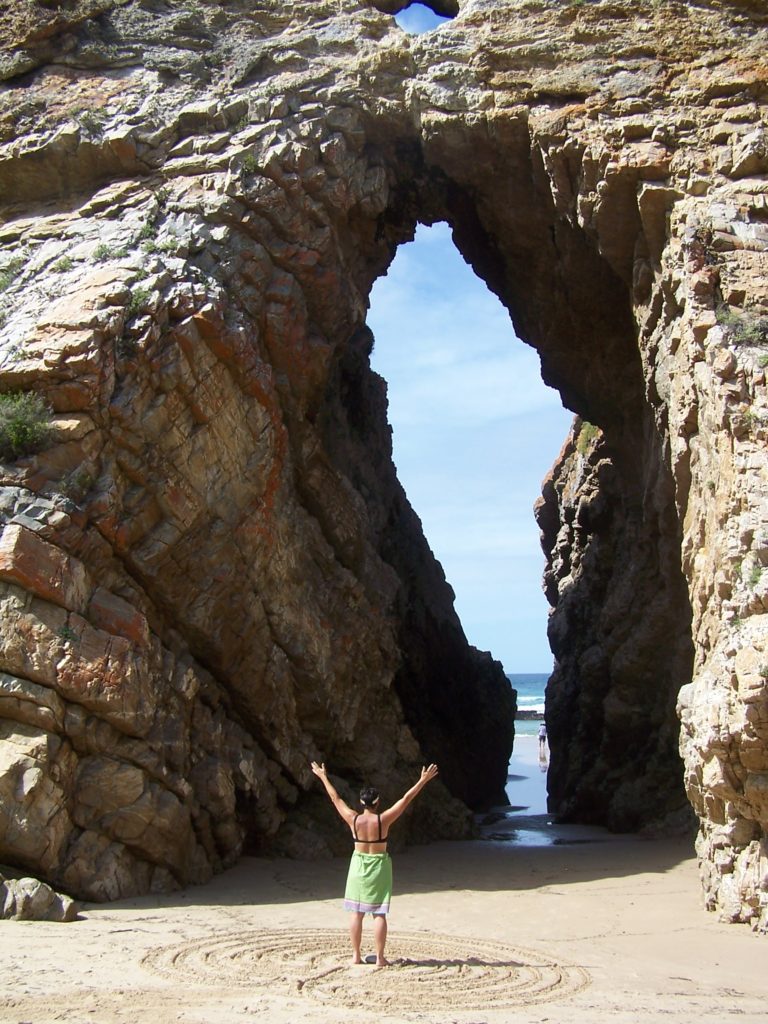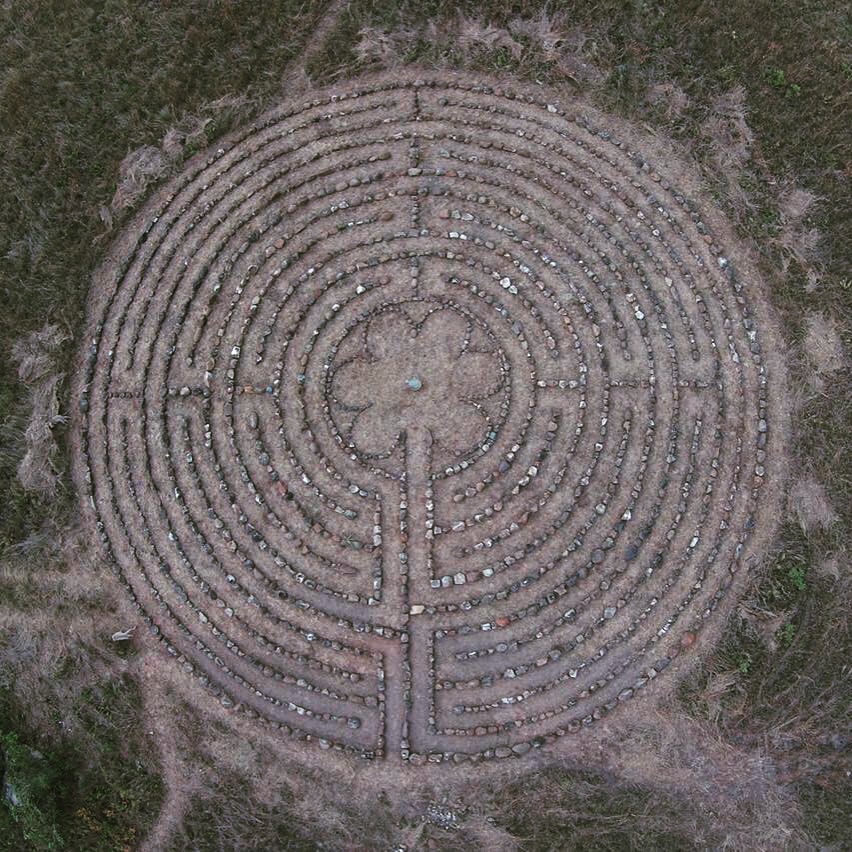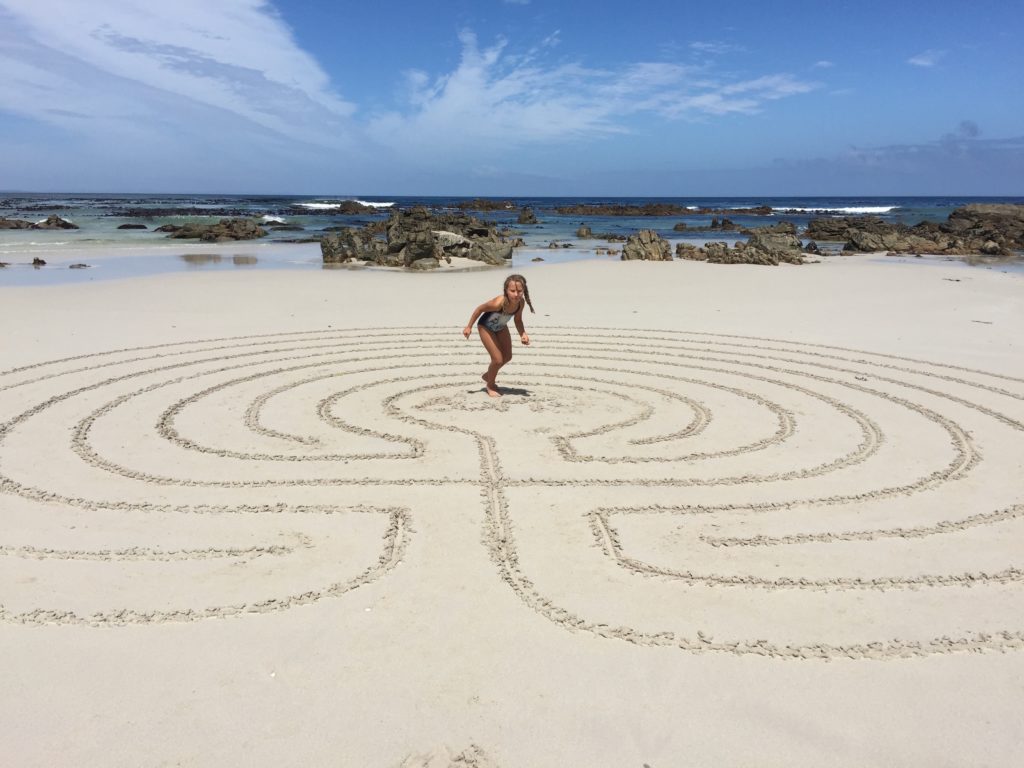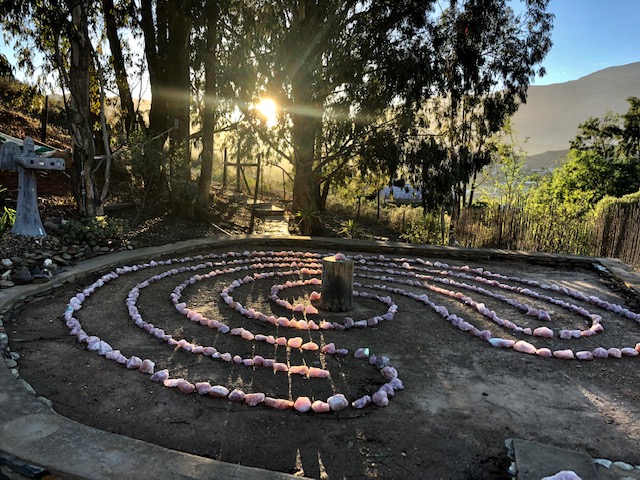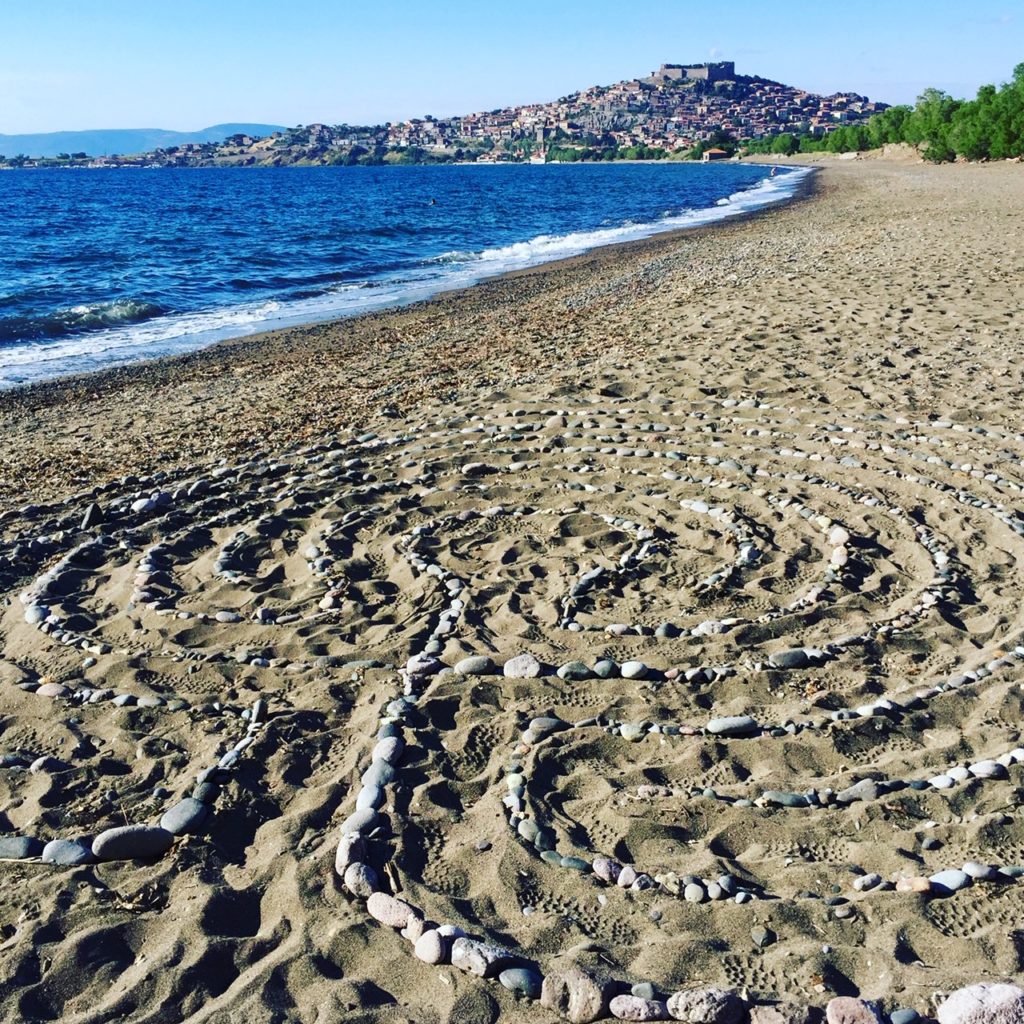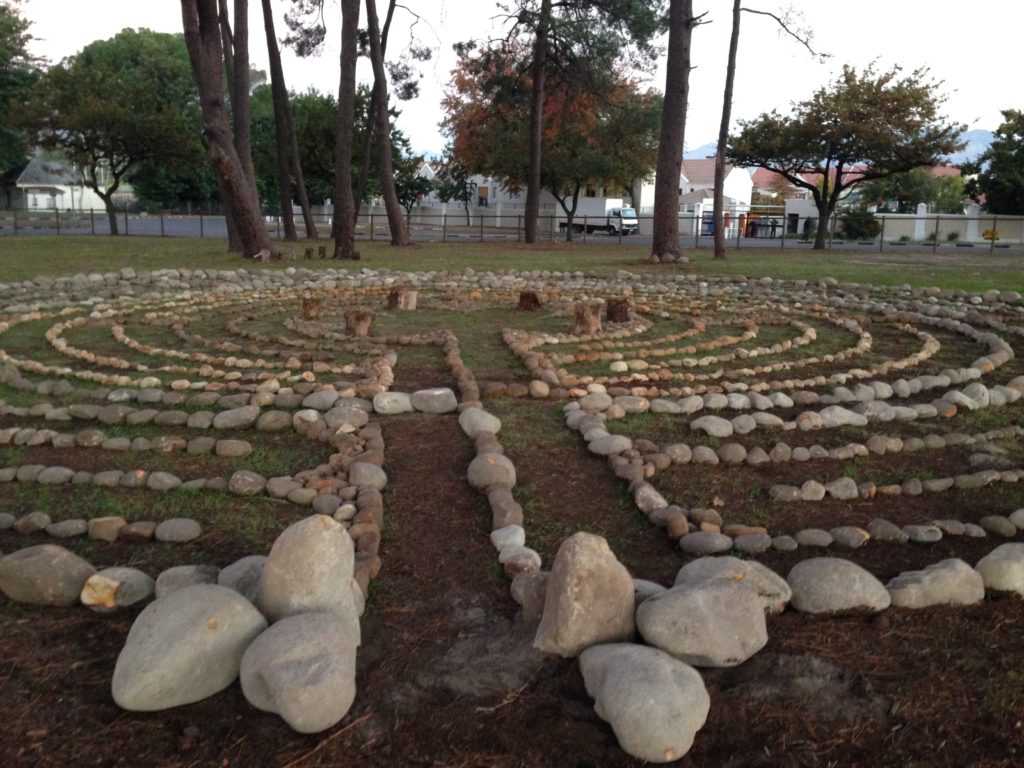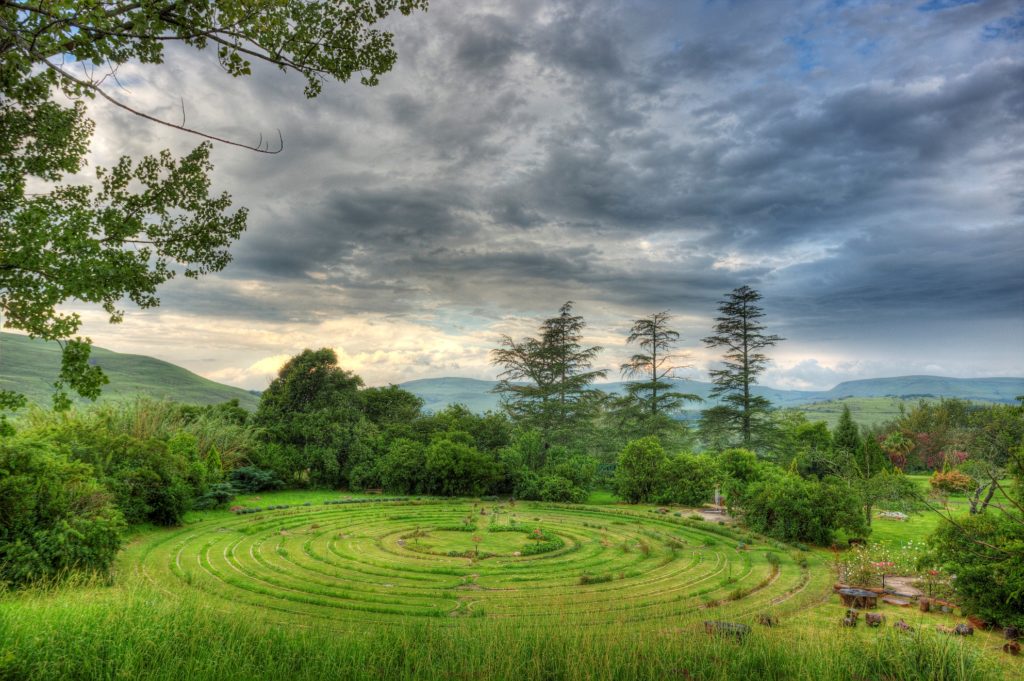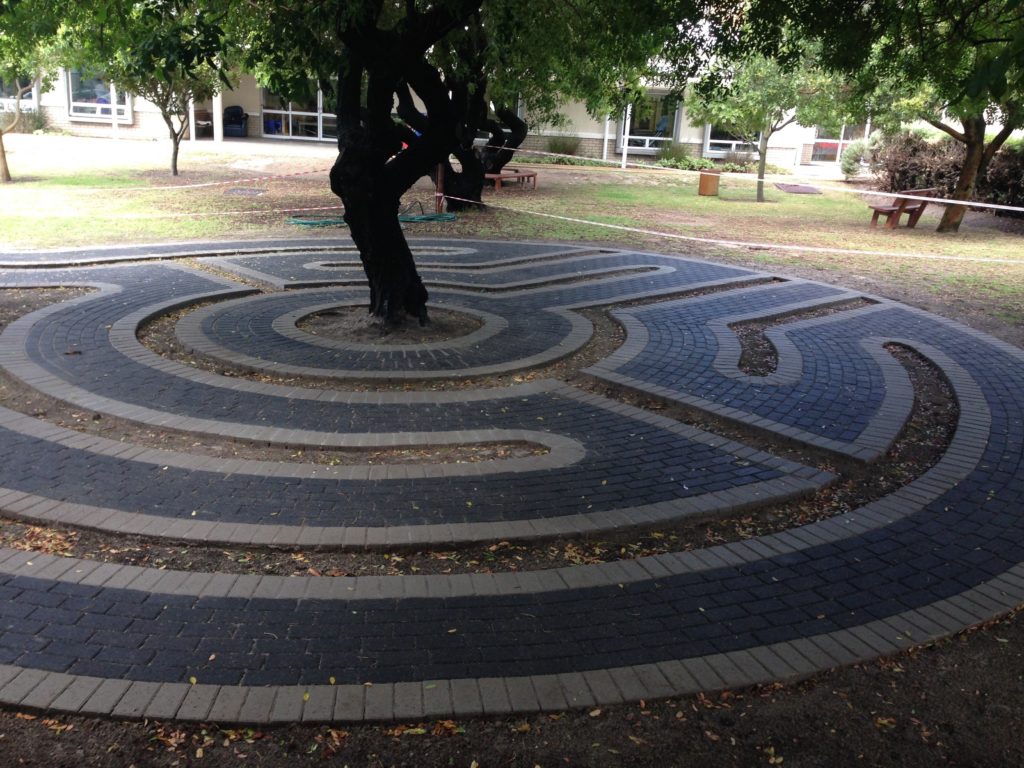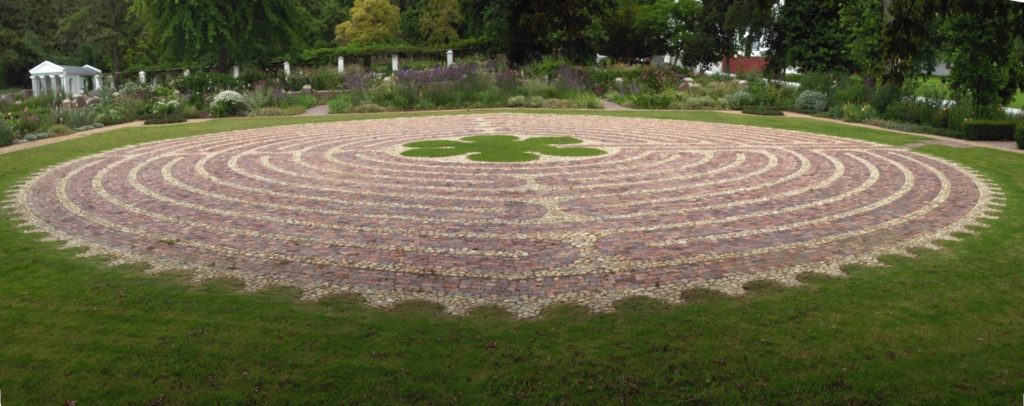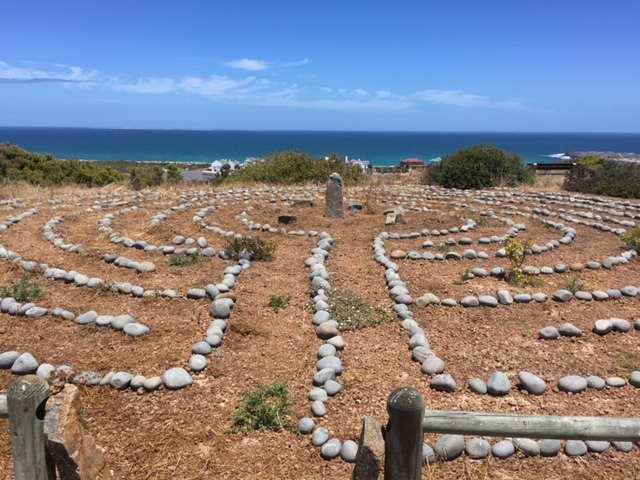Wonder jy oor labirinte?
Wat is ‘n labirint en wat is die doel daarvan? Waar kom die idee vandaan? Is alle labirinte dieselfde? Het jy geweet labirinte dateer uit die Middeleeue? Waar is die grootste labirint in Suid-Afrika?
Johan Rademan en Martelize Brink het op Oggend op RSG gesels met Kobus Burger, die bouer van ‘n groot fynbos-labirint, en ook met Terry de Vries, labirint-kenner.
Lees meer oor Terry se passies op https://kamalaretreathouse.com/ en oor labirinte op https://kamalaretreathouse.com/labyrinth/.
Terry sê ‘Stap ‘n labarint só’:
- Stop by die ingang. Neem ‘n diep rustige asem. Wat hoor jy? Wat sien jy? Wanneer jy gereed is, laat jou voete die pad volg.
- Vind jou eie tempo.
- Maak jouself los van enige verwagtinge. Word bewus van wat jy ervaar terwyl jy stap. Die labirint bied ‘n spieël vir jou: dit wys jou presies wat jy moet sien en waarvan jy bewus moet word.
- Die labirint is soos ‘n tweerigting straat: jy mag verby iemand stap.
- Raak stil in die middel. Rus. Wat neem jy waar? Wees oop vir enige insig wat na jou kom.
- Wanneer jy reg is, stap dieselfde pad weer uit na buite.
- Vertrou jou innerlike wysheid. Vertrou jou voete. Hulle sal jou lei na ‘n vredevolle plek.
Labyrinths – paths that lead to inner peace
By Terry de Vries
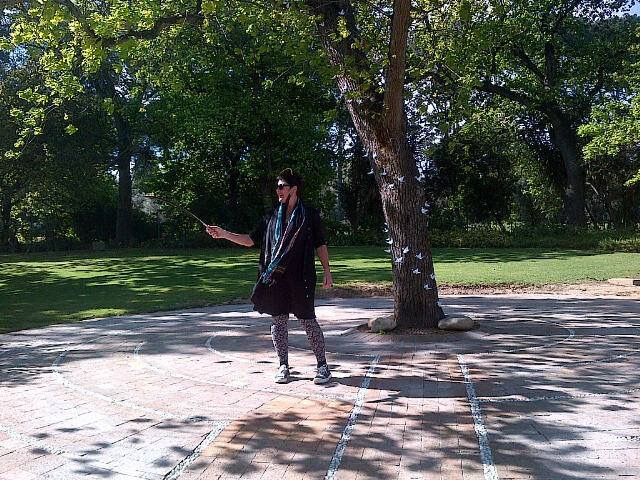
Terry de Vries by die labirint wat sy rondom ’n boom by Oude Libertas Amfiteater buite Stellenbosch gebou het.
In today’s busy world, people need tools to help them to cope with stress, find peace and improve the quality of their lives. A labyrinth offers such a tool. It helps to bring us into balance, giving us a sense of wholeness and a feeling of serenity.
A labyrinth is a sanctuary. It provides a safe and sacred space in which you can reconnect with yourself, nature and the world of spirit. It is one of the oldest contemplative tools known to humankind. And it can be walked anytime, anywhere and in any setting to break away from the hustle and bustle of everyday life so that you can return to your life with renewed vigour, passion, peace and creativity.
Dr Lauren Artress, labyrinth expert, writes in her book, Walking a Sacred Path: Rediscovering the Labyrinth as a Spiritual Tool: “The labyrinth is truly a tool for our times. It can help us find our way through the bewildering multiplicity, to the unity of source. The labyrinth is an evocative experience. It provides the sacred space where the inner and outer worlds can commune, where the thinking mind and the imaginative heart can flow together. It can provide a space to listen to our inner voice of wisdom and come to grips with our role in humankind’s next evolutionary step.”
But, what is a labyrinth?
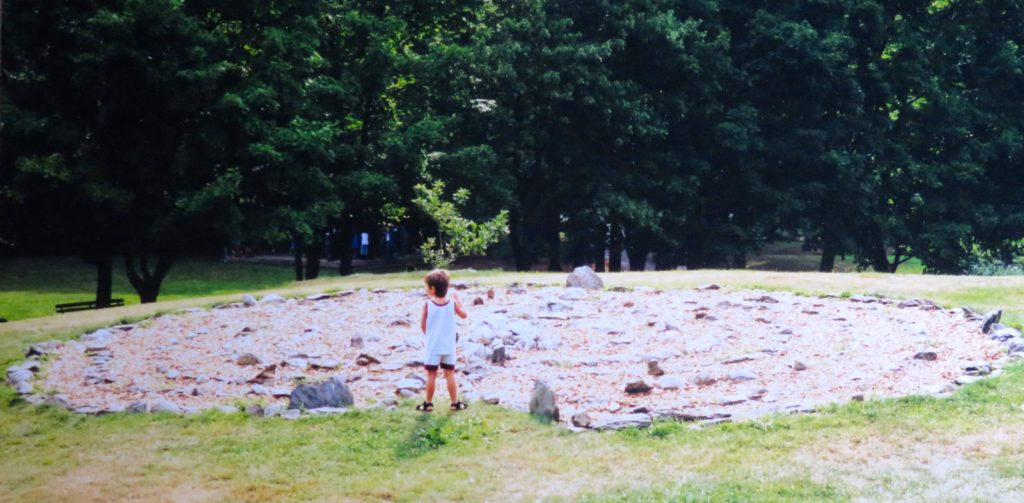
Hierdie labirint op die gronde van die Omega Institute for Holistic Studies in die VSA het die saadjie van labirinte by Terry de Vries geplant. Sy het ervaar hoe dit haar seun Josua (destyds 5 jaar oud) kalmeer en sy gemoed van kwaai na gelukkig verander.
First, it is not a maze – something that even dictionaries seem to confuse! A labyrinth is distinctly different from a maze.
A maze has twists and turns and blind alleys and is usually built with hedges. You easily get lost.
A labyrinth is a single, winding path that leads you from the entrance to the centre. You cannot get lost, as the way in is the way out. It does not matter how intricate the labyrinth pattern may be, there is only a single route to the centre. Thus the only choice with a labyrinth is whether to enter or not.
Walking a labyrinth, you loose track of direction and of the outside world, and as a result achieve a contemplative state. It is therefore a form of walking meditation.
As you walk toward the centre of the labyrinth, you symbolically walk toward your personal spiritual centre. And this walk mirrors your journey through life. The labyrinth walk works with the metaphor. Everything that happens inside the labyrinth can be seen as a metaphor for your life. The labyrinth will mirror to you what you need to see. Whatever you experience, it will offer insight as to what you need to pay attention to or amend in your life.
It is a symbolic pilgrimage that stills the mind, helping the heart to open and you to return to the world with a deeper and clearer understanding of who you are.
Why do people use labyrinths?
People come to labyrinths for many reasons and in many different ways. It can be many things.
Labyrinths can be walked to connect with nature, to let go of the hectic modern life, to get rid of stress, to still the mind of thoughts, to let go of the past, to heal grief or trauma, to answer specific questions, to resolve conflict, to solve problems, to set goals, to find inner peace, to live more consciously, to increase productivity, to become more creative or just to chill out.
Whatever the reason, it is the beginning of a journey. A journey that eventually will start a process where powerful changes are possible.
Robert Ferré, professional labyrinth builder, says: “It is a powerful and universal spiritual tool that can lead us not only to its centre, but to ourselves and to God.” Labyrinths offer a non-denominational path for self-discovery. There is no dogma attached to labyrinths. It is open to anyone on any spiritual path and from any religious tradition. It is a symbol open to your intentions.
What are some benefits of walking a labyrinth?
Research in America concluded that people walking the labyrinth are more relaxed, peaceful and calm afterwards. They are also less angry or frustrated and get relief from emotional trauma and grief. After walking a labyrinth people can focus and concentrate better, and their intuition, imagination and creativity are stimulated.
The Harvard Medical School’s Mind/Body Medical Institute found that focused walking meditations are highly efficient at reducing anxiety and elicits the relaxation response. This has significant long term health benefits, including lowered blood pressure, reduced incidents of chronic pain and a reduction of insomnia.
Short history of labyrinths
The oldest known graphic representation of a labyrinth is carved on a piece of mammoth ivory. This was found in a Paleolithic tomb dated 5000 BC in Siberia!
Other early recordings of classical labyrinths are ancient rock carvings in Spain (2000 BC), Italy (750 BC) and Morocco (500 BC). Examples of classical labyrinths were also found on ancient Greek coins from Crete (300 BC).
In the time of the Roman Empire square mosaic labyrinths were built with more intricate patterns. Today, some examples can still be seen at museums throughout Europe, like the Vienna and Pamplona museums.
During the Middle Ages, the classical labyrinth symbol was transformed to incorporate Christian symbology (i.e. the cross) and built in cathedrals. They were walked as a substitute for the long and arduous pilgrimage to Jerusalem. Of the 80 cathedrals in France and Italy during that time, 22 of them had labyrinths.
The best known authentic example of an 11-circuit Medieval Labyrinth is the one in Chartres Cathedral, France, built in 1201. (Now you know a labyrinth is not New Age. It is Middle Age!) This labyrinth is the oldest walking-size labyrinth in the world and is still used today (although you can only walk it on Fridays as it is packed with chairs the other days).
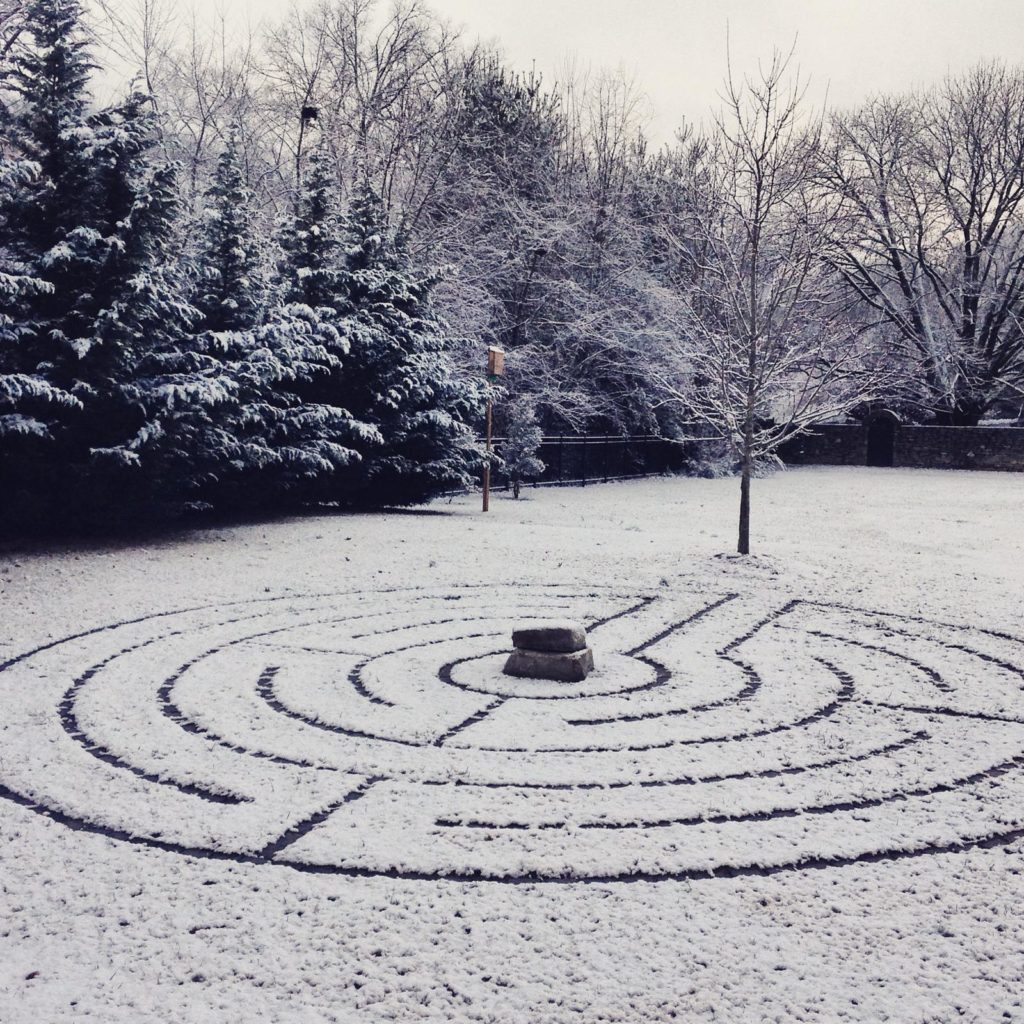
’n 5-baan labirint in die sneeu in Nashville, Tennessee, VSA, naby Michelle Hamman, Terry se suster.
The modern labyrinth revival, which started in the 1970s, has birthed labyrinths all around the world in public parks, private gardens, memorial gardens, universities, schools, hospitals, health care facilities, churches, religious communities, spa, retreat and wellness centres, prisons and businesses.
Jeff Saward, author of several labyrinth books, says: “Throughout the history of the labyrinth, whenever and wherever society is undergoing rapid change and development, the labyrinth has blossomed.”
The miracle is not to walk on water.
The miracle is to walk on the green earth,
dwelling deeply in the present moment
and feeling truly alive. – Thich Nhat Hanh
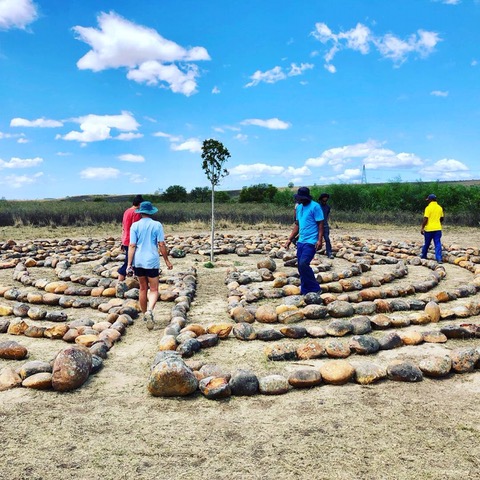
Hier is ’n labirint wat Terry verlede week help bou het by Stonehill River Lodge buite Swellendam. Ons het klippe gebruik wat op die plaas voorkom. Dit is die MOOISTE klippe ever!!! Met mos en lichen op dit. Elke klip vertel ’n ander storie.
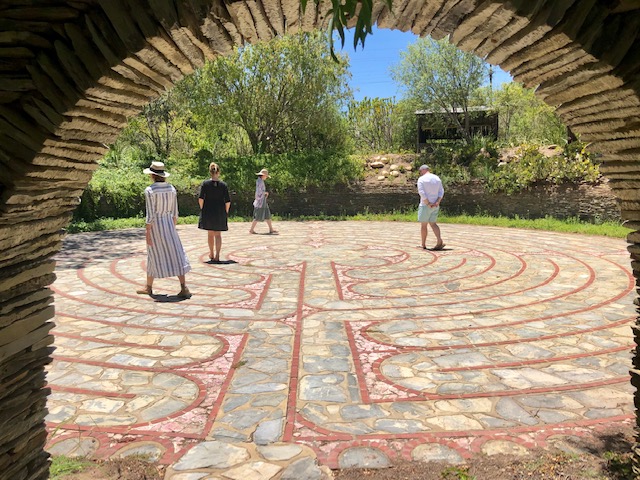
Die 11-baan Middeleeuse labirint op Barrydale wat Terry de Vries onlangs gekoop het. Om ’n labirint te stap bring vrede en rustigheid in ’n mens se gemoed.
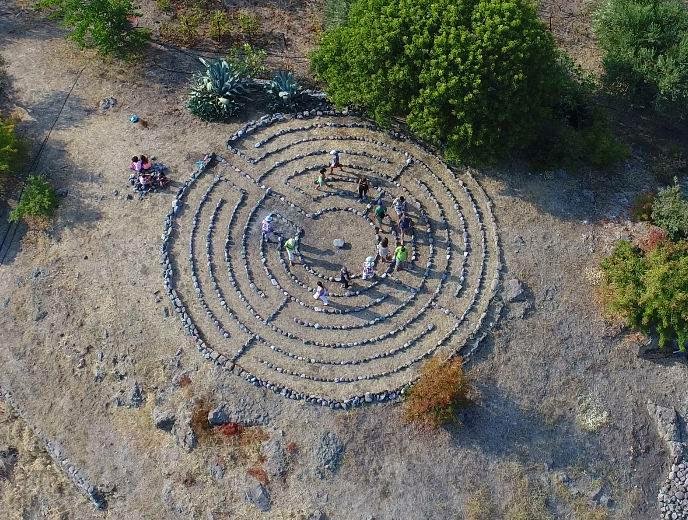
Molivos fees. Hierdie labirint is verlede jaar vir die eerste Euphoriafees op Molivos, Lesvos, Griekeland, gebou.
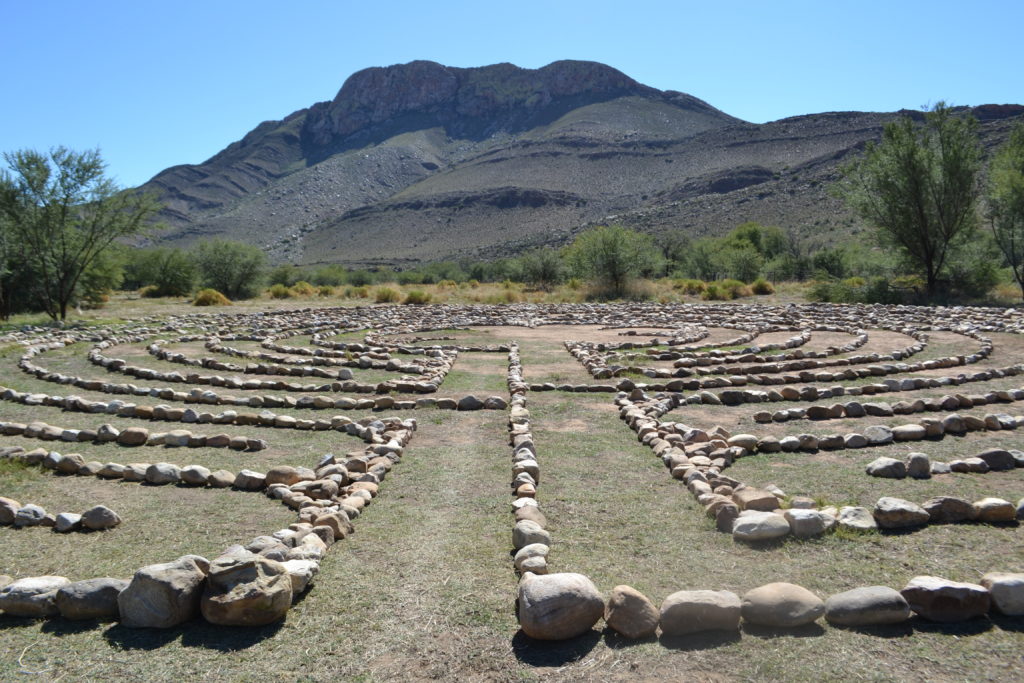
Die grootste labirint wat Terry de Vries gebou het op die plaas MyShire buitekant Prins Albert. Dis groot genoeg vir perde om deur dit te kan loop.
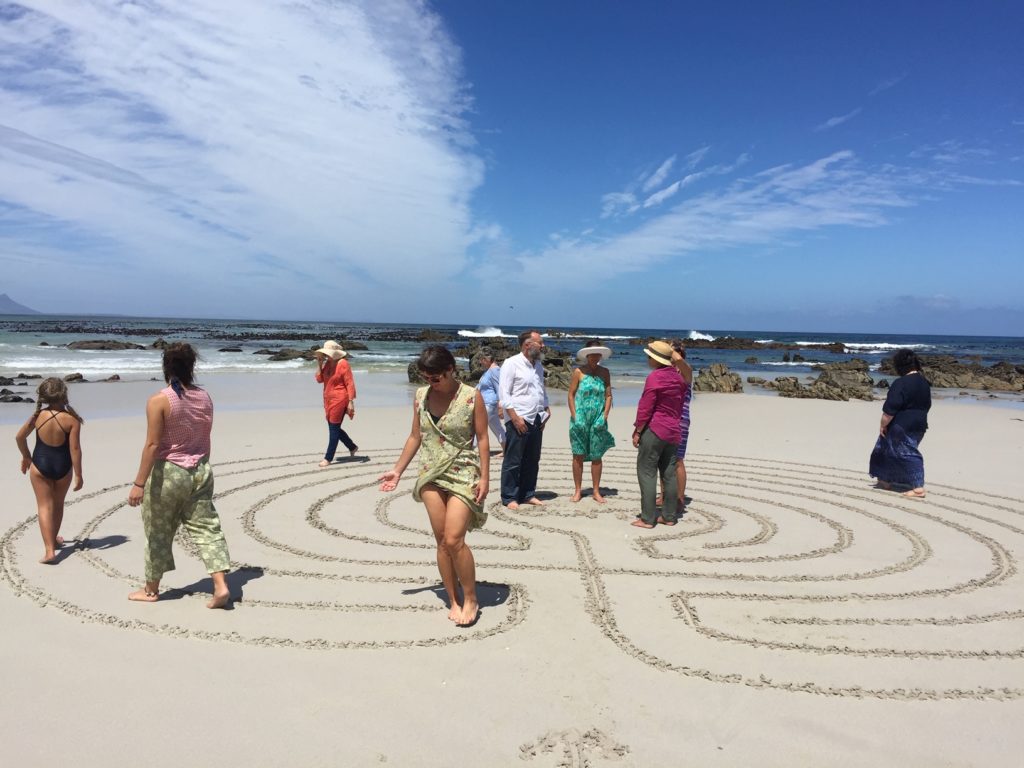
Vriende van CorisaMaria Bredenkamp stap ’n labirint op die strand by Bettysbaai om haar lewe te gedenk.
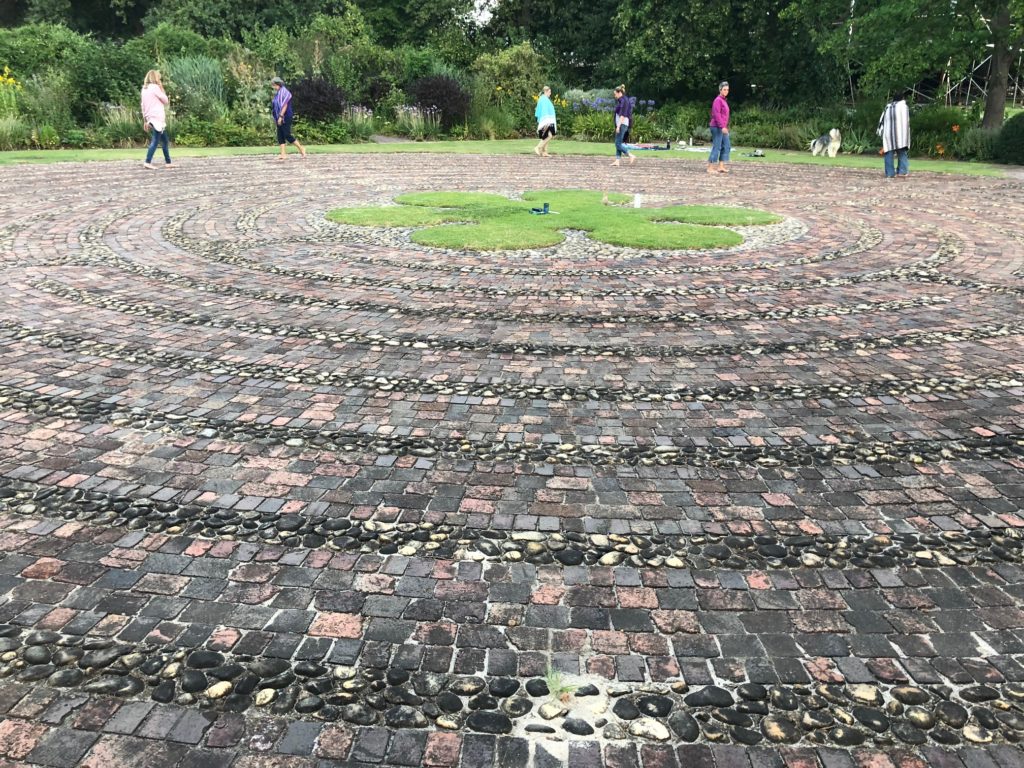
Die pad vol draaie in ’n labirint neem jou uiteindelik tot by die middel. Die labirint op Rustenberg Wynplaas buite Stellenbosch is reeds in 2004 gebou.
Lees meer oor labirinte: http://www.crystalinks.com/labyrinths.html

